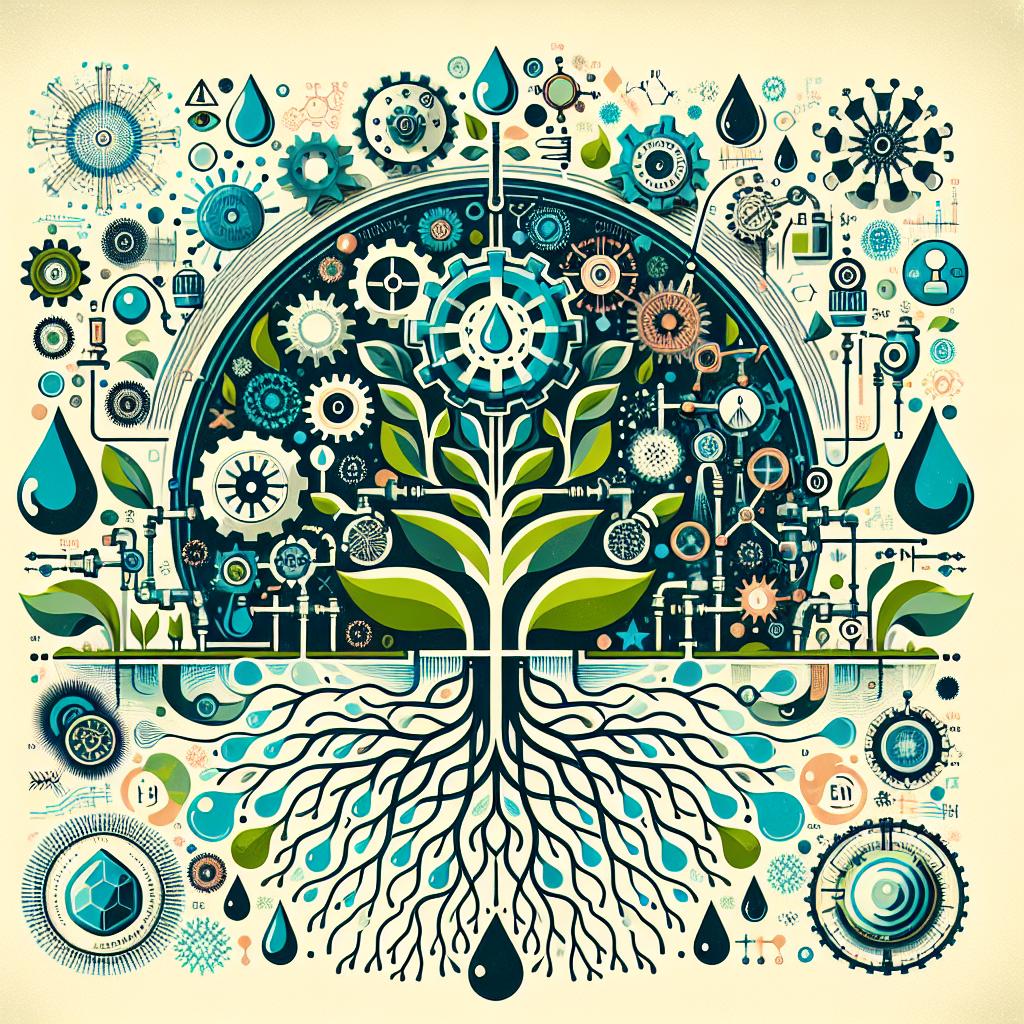This post may contain affiliate links which means I may receive a commission for purchases made through links. Learn more on my Private Policy page.
irrigation System Troubleshooting: Common Issues and Solutions
Welcome to the verdant world of gardening, where every droplet counts and every leaf tells a story! Whether you’re nurturing a sprawling vegetable garden or cultivating a cozy flower bed, your irrigation system is the unsung hero that ensures your plants receive the hydration they need to thrive. But what happens when this essential lifeline encounters a hiccup? Fear not! In this friendly guide, we’ll dive into the most common irrigation troubles you might face and arm you with savvy solutions to keep your garden flourishing. So grab your toolkit and let’s turn those pesky problems into victorious victories—because every green thumb deserves a thriving oasis!
Understanding Your Irrigation System: The Basics of How It Works
To grasp the fundamentals of your irrigation system, it’s essential to understand its key components and how they interact. Most systems include elements such as pipes, emitters, controllers, and valves. These parts work in harmony to deliver water efficiently to your plants, ensuring they receive the right amount of moisture without wastage. If one component malfunctions, it can affect the entire system, leading to either water scarcity or overhydration—which can be detrimental to plant health.
Common challenges include leaks, clogged emitters, or faulty timers. Here are some typical issues and solutions:
- Leakage: Check for cracked pipes or loose connections; repairing or replacing them can solve the problem.
- Clogged Emitters: Use a pin or compressed air to clear small blockages; regular maintenance can prevent this from happening.
- Timer Malfunctions: Reset the timer according to the manufacturer’s instructions; consider upgrading to a more reliable digital model if issues persist.
| Issue | Possible Causes | Swift Fixes |
|---|---|---|
| Low Pressure | Blocked lines or too many emitters | Clear blockages and reduce emitter count |
| Uneven Watering | Poor layout or malfunctioning valve | Reconfigure layout or check valve operation |
| Overwatering | Timer set too long or pressure issues | Adjust timer settings and inspect pressure regulators |

Identifying Common Irrigation Issues: Red Flags to Watch For
When it comes to maintaining an efficient irrigation system, keeping an eye out for specific warning signs is crucial. Inconsistent water distribution is a primary concern; if some areas of your garden show signs of overwatering while others are parched, your system may need recalibration. Clogged or damaged nozzles can also lead to uneven watering, so regularly inspecting and cleaning these components is recommended. Additionally, unusual noises emanating from pumps or valves can indicate air leaks or other underlying mechanical issues. Here are typical signs you should watch for:
- Dry patches: Areas of soil that remain dry despite regular watering can signal problems.
- Pooling water: Excess water accumulation can indicate blockages or leaks.
- Low pressure: reduced water pressure can affect the system’s overall efficiency.
Another key factor is monitoring for irregular growth patterns in your plants. Plants that are wilting, yellowing, or exhibiting stunted growth can be your plants’ way of signaling a problem with the irrigation system. Watering schedules also deserve scrutiny; if your automated system fails to activate or runs longer than necessary,it may need servicing. Scheduling regular checks will help you catch issues early, saving both time and resources. Consider this handy table for a quick reference to potential problems and their solutions:
| Issue | Potential Cause | Suggested Solution |
|---|---|---|
| Dry patches | Uneven water distribution | Recalibrate system settings |
| Pooling water | Clogs or leaks | Inspect and clean nozzles |
| Low pressure | Leaks or malfunctioning pumps | Check for leaks and repair |

Simple Solutions to common Problems: Keeping Your Garden Hydrated
Keeping your garden well-hydrated is crucial, especially during the warmer months when plants are thirstiest. If you notice wilting leaves or dry patches, you might be facing some common irrigation issues. Here are a few straightforward solutions to help you troubleshoot:
- Check for Clogs: Inspect your sprinkler heads and drip lines for debris. A simple rinse can often restore proper flow.
- adjust Watering Schedule: Consider watering early in the morning or late in the evening to minimize evaporation.
- Test Soil Moisture: Use a moisture meter or your finger to check soil dampness before watering to prevent over-irrigation.
For those using automatic systems, programming mistakes can lead to under or over-watering. Regularly review your settings, and try the following tips:
| Issue | Solution |
|---|---|
| Inconsistent Watering | Sync timers with seasonal changes to adjust run times accordingly. |
| Sprinkler Overlap | Use adjustable heads or reposition to ensure even coverage. |
| Too Much Moisture | Install rain sensors to pause irrigation when it rains. |

Maintenance Tips for Longevity: Ensuring Your System Stays in Top Shape
Regular maintenance is the secret to keeping your irrigation system running smoothly and efficiently. Start by inspecting the components of your system at least once a season. Look for signs of wear or damage in the pipes,hoses,and sprinkler heads.Identify any leaks and repair them promptly to avoid excess water loss and wasted resources. Additionally, it’s beneficial to clean the filters and emitters frequently to ensure consistent water flow. Dust and debris can accumulate over time, obstructing the water supply and leading to uneven irrigation.
Another crucial aspect of maintenance is adjusting the system according to seasonal needs. As the weather changes, so should your irrigation schedule. Monitor rainfall and adjust watering times accordingly to prevent overwatering during wet seasons. Also, consider winterizing your system if you live in an area with freezing temperatures. This typically involves draining the system to prevent pipe bursts caused by frozen water. keep an eye on your watering controllers and timers, and replace batteries or faulty parts as necessary to ensure your system functions optimally all year round.
Insights and Conclusions
As we wrap up our journey through the world of irrigation system troubleshooting, it becomes clear that even the most advanced systems can hit a bump in the road now and then. Whether your garden is a sprawling oasis or a small urban patch, knowing how to identify and resolve common issues is key to keeping your plants thriving.
Remember, every hiccup is just an opportunity to learn more about the intricate dance of water and soil. By becoming familiar with the quirks of your irrigation system, you’re not just solving problems; you’re nurturing your green thumb and ensuring your plants receive the love and care they deserve.
So, the next time you face a drippy drip line or a stubborn sprinkler, don’t fret! roll up your sleeves and channel your inner irrigation detective.With a bit of patience and the right no-how,you can transform those pesky problems into solutions that keep your garden flourishing. Here’s to happy plants and a bountiful harvest! Happy gardening! 🌱✨
This post may contain affiliate links which means I may receive a commission for purchases made through links. Learn more on my Private Policy page.

